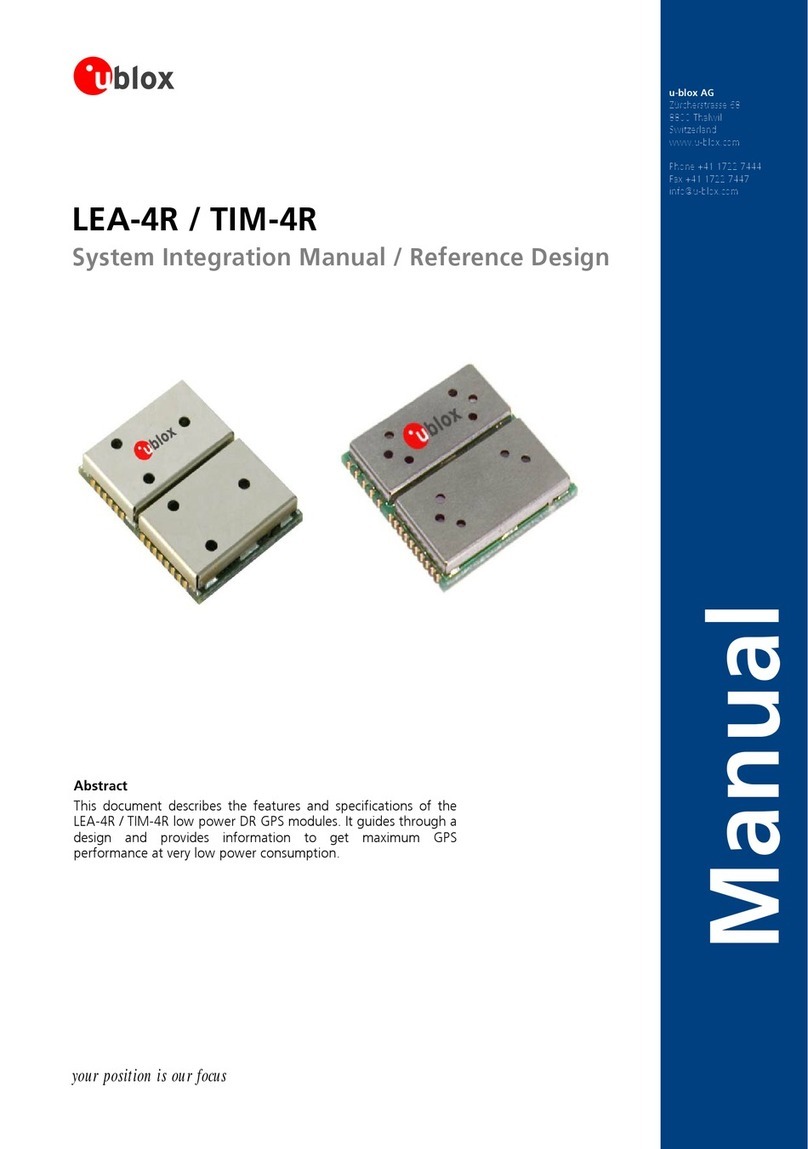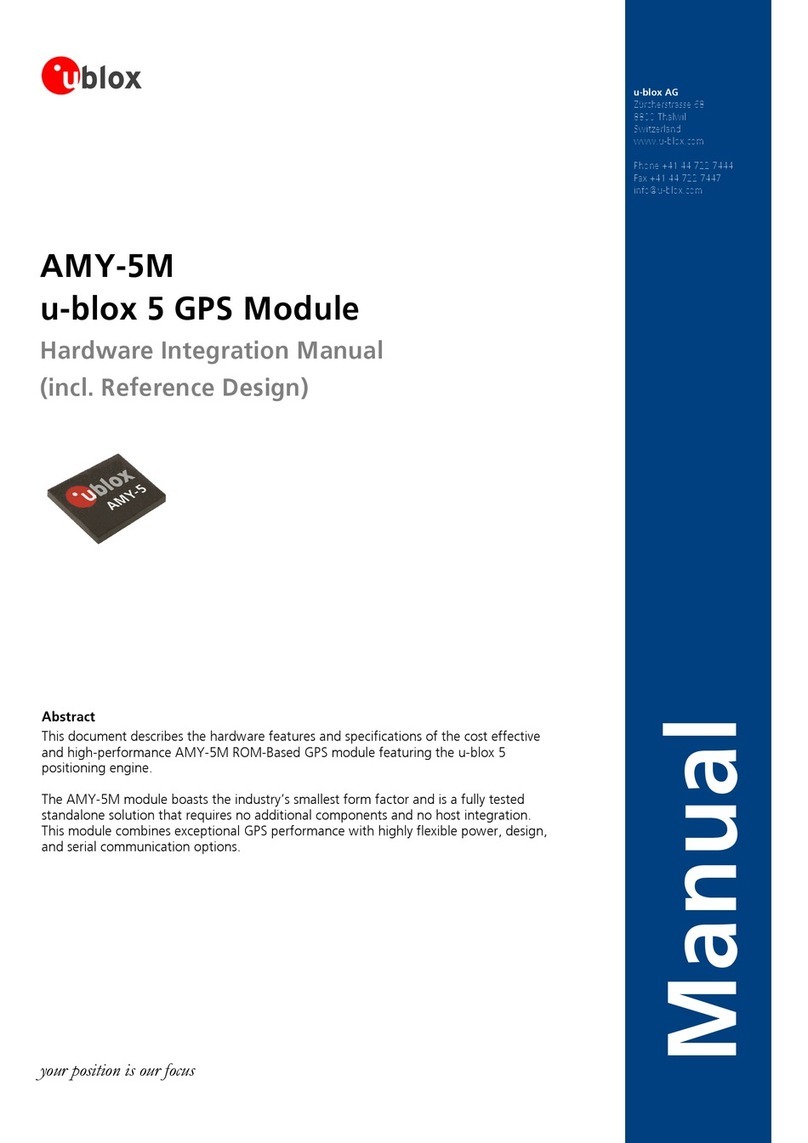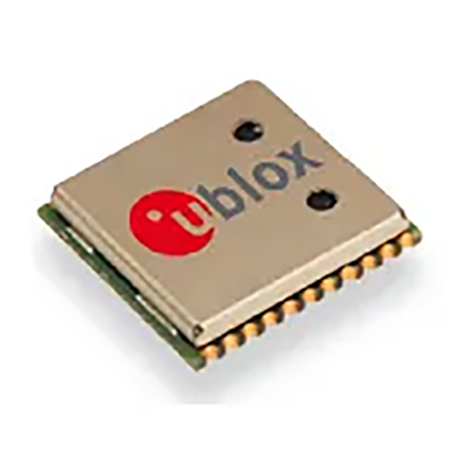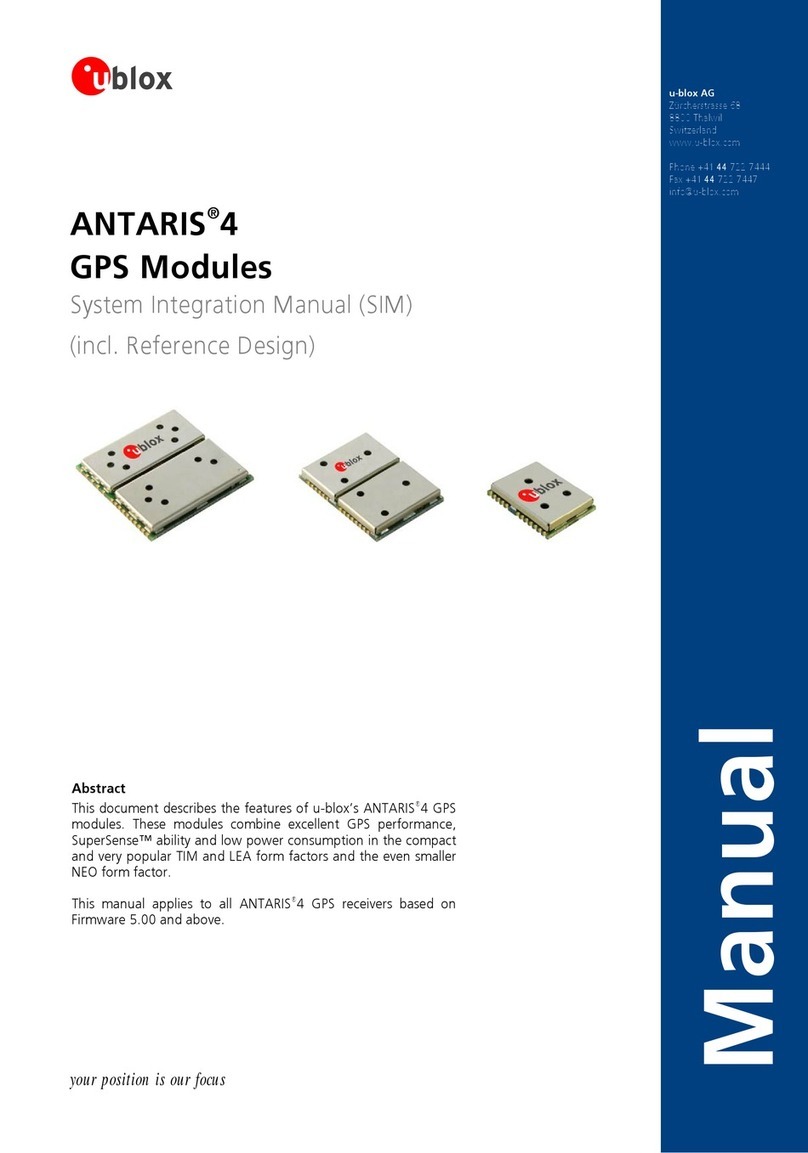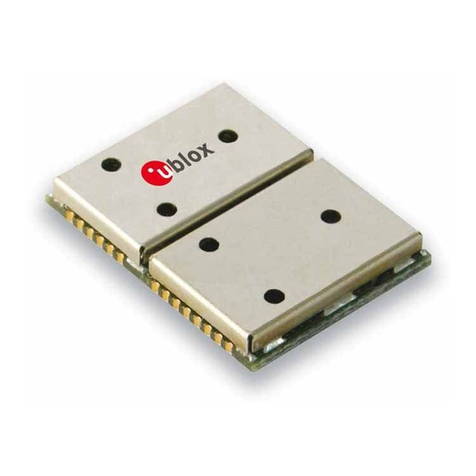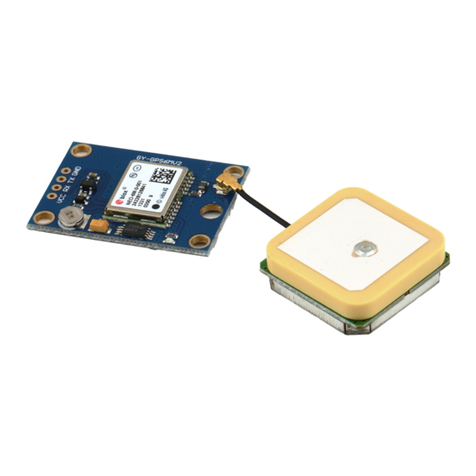
UBX-G7020 - Hardware Integration Manual
Contents
GPS.G7-HW-10003 Objective Specification Page 6 of 74
2.6.1 General notes on interference issues ........................................................................................... 32
2.6.2 RF front-end circuit options ......................................................................................................... 34
2.7 USB .................................................................................................................................................... 38
2.8 JTAG .................................................................................................................................................. 39
2.9 Layout ................................................................................................................................................ 40
2.9.1 Placement ................................................................................................................................... 40
2.9.2 Package footprint, copper and solder mask ................................................................................. 40
2.10 System Configuration ..................................................................................................................... 43
2.10.1 Communication Interface Configuration ..................................................................................... 43
2.10.2 Low Level Configuration.............................................................................................................. 43
2.10.3 Functional configuration.............................................................................................................. 47
2.10.4 Functional configuration at run time............................................................................................ 47
3Component Selection.................................................................................................48
3.1 TCXO (Y1) .......................................................................................................................................... 48
3.2 Crystal (Y2)......................................................................................................................................... 50
3.3 RTC crystal (Y3) .................................................................................................................................. 51
3.4 SQI flash (U3)...................................................................................................................................... 51
3.5 RF band-pass filter (F1) ....................................................................................................................... 51
3.6 External LNA protection filter (F2) ....................................................................................................... 52
3.7 USB line protection (D1) ..................................................................................................................... 52
3.8 USB LDO (U3) ..................................................................................................................................... 52
3.9 External LNA (U1) ............................................................................................................................... 52
3.10 LNA_IN ESD protection diode (D1) .................................................................................................. 53
3.11 Operational amplifier (U6)............................................................................................................... 53
3.12 Open-drain buffer (U4, U7 and U8)................................................................................................. 53
3.13 Antenna supervisor switch transistor (T1) ........................................................................................ 53
3.14 RF inductors .................................................................................................................................... 53
3.15 Inductor for DCDC converter (L2).................................................................................................... 54
3.16 Standard capacitors ........................................................................................................................ 54
3.17 Standard resistors ........................................................................................................................... 55
3.18 Ferrite beads (FB1) .......................................................................................................................... 55
3.19 Feed-thru capacitors ....................................................................................................................... 55
4Design-in Checklists ...................................................................................................56
4.1 Pin list................................................................................................................................................. 57
4.2 Schematic and bill of material design-in checklist................................................................................ 58
4.3 Layout design-in checklist ................................................................................................................... 58

